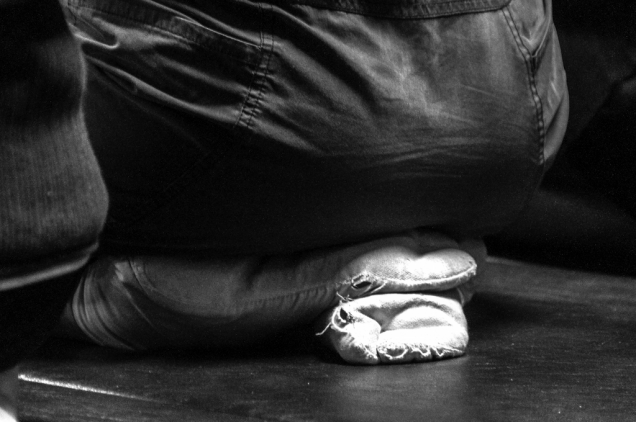Noh, Modernism, and Journeys in Teaching
Learning to Kneel traces the lessons, collaborations, and translations that introduced Japanese noh drama to the twentieth-century artistic movement called modernism. Noh captivated famous Euro-American artists, including Ezra Pound, W. B. Yeats, Bertolt Brecht, Benjamin Britten, and Samuel Beckett. They collaborated with an international cast of artists who taught them about noh, often while directing, choreographing, or performing in their productions. Preston reintroduces to modernism figures like the Tokyo-born dancer and theater artist, Ito Michio, who performed with Pound in dance-poem recitals and in Yeats’s famous noh adaptation, At the Hawk’s Well. Ito took the play on an international tour that influenced Japanese modern and traditional performance.
Previous accounts of modernism and noh emphasize the errors in, for example, Pound’s noh translations or Yeats and Brecht’s exoticism and misunderstandings of the noh plays they adapted. Preston’s different approach stems from her experience taking lessons in noh performance technique with a professional actor in Tokyo. This “study abroad” encouraged her to reconsider widespread assumptions about error, misunderstanding, and success.
Noh pedagogy is devoted to preserving a repertory of plays transmitted for centuries from teacher to student in a hierarchical relationship – symbolized for Preston by the decorous and painful practice of kneeling before the teacher to bow, receive instruction, and practice chanting. After initially assuming noh lessons would feel humiliating, Preston found herself experiencing the value of and pleasure in submission to an authority and training regimen. Her tendency to emphasize innovation and subversion (which were of little use in noh lessons) had encouraged her to overlook the complex ranges of agency and empowerment regularly experienced by teachers and students.
Learning to Kneel is a book about journeys: noh’s journey across modernist stages and back to Japan; the international circulation of noh texts and tours of plays; the bodily techniques performers carry across national borders; the travel, even tourism, by which modernist artists encountered noh and – albeit in some limited way – its challenges to western ideas of agency; and Preston’s journey to Japan for noh lessons, where learning to kneel taught her new approaches to teaching and learning.

